The Best Paints for Fire
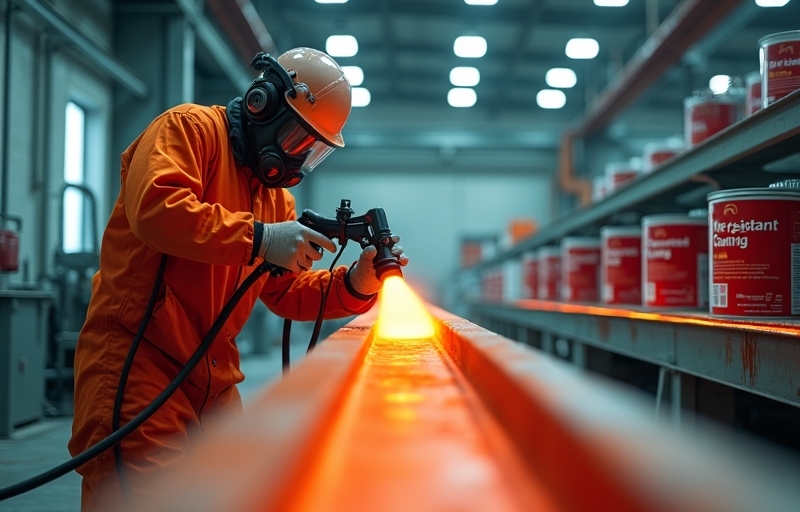


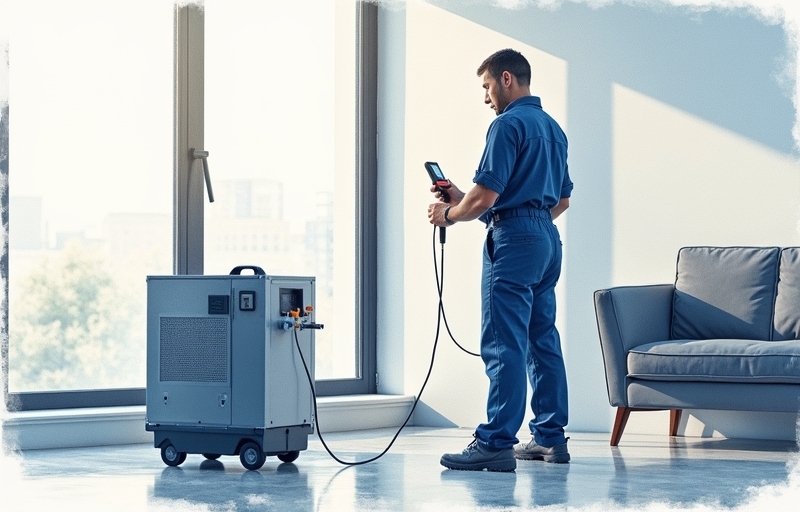

Water damage in your crawl space can lead to costly repairs, mold growth, and structural issues if not addressed properly. Understanding how to prevent water damage in your crawl space is essential for maintaining a safe and healthy home. Excess moisture can seep into your foundation, weaken support beams, and create the perfect environment for mold and mildew. By taking proactive steps such as proper drainage, sealing cracks, and installing a vapor barrier, you can protect your home from potential damage. At [Your Company Name], we are committed to quality service, offering fast, friendly, and professional water damage restoration. If you’re dealing with water damage, don’t wait—call us now at 855-933-7935 for expert assistance. Our team specializes in water damage restoration, using advanced equipment to dry and restore affected areas efficiently. Stay ahead of potential issues and safeguard your home with these essential prevention tips.
Crawl space water damage can lead to serious structural issues and health hazards if not addressed promptly. Understanding the primary causes of moisture buildup in your crawl space is essential for effective prevention.
Several factors contribute to water damage in crawl spaces:
According to the Environmental Protection Agency (EPA), “excess moisture in crawl spaces can contribute to indoor air quality problems and structural deterioration.” Proper moisture control is crucial to maintaining a healthy home environment.
To prevent these issues, homeowners should consider professional water damage restoration services and regular inspections. If you suspect hidden moisture problems, check out our guide on how to identify hidden water damage early.
For more information on protecting your home, visit our blog for expert tips and insights.
Proper drainage around your home is essential to preventing water damage in your crawl space. Without an effective drainage system, rainwater and excess moisture can accumulate around your foundation, leading to structural issues, mold growth, and costly repairs. Ensuring that water is directed away from your home helps maintain a dry and stable environment beneath your house.
One of the most effective ways to improve drainage is by installing gutters and downspouts that channel water away from the foundation. Additionally, grading the soil around your home to slope away from the structure prevents water from pooling near the crawl space. A French drain system or sump pump can also be beneficial in areas prone to heavy rainfall or poor soil drainage.
Excess moisture in your crawl space can lead to serious problems, including mold growth and wood rot. If left unchecked, these issues can compromise the integrity of your home and pose health risks to your family. Regular inspections and maintenance of your drainage system can help prevent these problems before they escalate.
For more information on protecting your home from water damage, explore our services or check out our detailed guide on how to identify hidden water damage early. If you need professional assistance, feel free to contact our team today.

Properly sealing and waterproofing your crawl space is essential to preventing moisture buildup and potential water damage. A well-sealed crawl space helps protect your home’s foundation, improves air quality, and reduces the risk of mold growth. Start by inspecting the area for any cracks or gaps in the walls and floors. Sealing these openings with high-quality caulk or foam insulation prevents water intrusion and keeps pests out.
Installing a vapor barrier is another crucial step in waterproofing. A durable plastic sheet placed over the ground helps block moisture from seeping into the crawl space. Additionally, consider using a sump pump or a drainage system to redirect water away from your home’s foundation. Proper ventilation is also key—installing vents or a dehumidifier can help regulate humidity levels and prevent condensation.
Regular maintenance and professional inspections ensure long-term protection. If you suspect water damage, addressing it promptly can prevent costly repairs. Learn more about our services to keep your home safe from moisture-related issues. For expert guidance, check out our blog for tips on maintaining a dry and secure crawl space. If you need assistance, don’t hesitate to contact our team for professional waterproofing solutions.

Installing a sump pump in your crawl space is a highly effective way to prevent water damage and protect your home’s foundation. A sump pump works by collecting excess water in a designated pit and automatically pumping it away from your home, reducing the risk of flooding and moisture buildup. This is especially important in areas prone to heavy rainfall or high groundwater levels.
Excess moisture in your crawl space can lead to serious issues such as mold growth, wood rot, and structural damage. By installing a sump pump, you can maintain a dry environment and prevent costly repairs in the future. Regular maintenance of your sump pump is essential to ensure it functions properly when needed. Checking for debris, testing the pump periodically, and having a backup power source can help keep your system reliable.
If you’re unsure whether a sump pump is right for your home, consulting with professionals can provide valuable insights. Learn more about our services to find the best solution for your crawl space. Additionally, understanding the early signs of moisture problems can help you take preventive action. Check out our guide on how to identify hidden water damage early to protect your home from potential issues. Investing in a sump pump is a proactive step toward maintaining a safe and dry crawl space.

Properly managing humidity and ventilation in your crawl space is essential to preventing water damage and maintaining a healthy home environment. Excess moisture can lead to mold growth, wood rot, and structural issues, making it crucial to regulate humidity levels effectively. One of the best ways to do this is by installing a vapor barrier, which helps prevent moisture from seeping into the crawl space from the ground. Additionally, using a dehumidifier can help maintain optimal humidity levels, reducing the risk of mold and mildew.
Adequate ventilation is another key factor in moisture control. Ensuring proper airflow through vents or installing a mechanical ventilation system can help prevent condensation buildup. Sealing any cracks or leaks in the foundation can also minimize moisture intrusion. Regular inspections and maintenance can help identify potential issues before they escalate into costly repairs.
If you suspect water damage in your crawl space, seeking professional assistance is highly recommended. Our services include expert solutions for moisture control and damage prevention. Learn more about how it works to protect your home from long-term damage. For additional insights, visit our blog for expert tips on home restoration and maintenance. Taking proactive steps today can save you from expensive repairs in the future.
Regular inspections and proper maintenance are essential to preventing water damage in your crawl space. Conducting routine checks helps identify potential issues before they escalate into costly repairs. Start by inspecting for excess moisture, standing water, or mold growth, as these are clear indicators of water intrusion. Ensure that your crawl space has adequate ventilation to prevent humidity buildup, which can lead to mold and structural damage.
Sealing any cracks or gaps in the foundation can help prevent water from seeping in. Additionally, check your gutters and downspouts to ensure they are directing water away from your home’s foundation. Installing a sump pump or a vapor barrier can further protect your crawl space from excessive moisture.
Regular maintenance also includes checking for plumbing leaks and ensuring that your drainage system is functioning properly. If you notice any signs of water damage, such as musty odors or wood rot, it’s crucial to take immediate action. For professional assistance, consider exploring our services to safeguard your home from potential damage.
Understanding the early signs of water damage can save you from expensive repairs. Learn more about how to detect hidden issues by reading our detailed guide on how to identify hidden water damage early. If you need expert advice or assistance, feel free to contact our team for professional support.
If you notice persistent moisture, musty odors, or visible mold growth in your crawl space, it may be time to seek professional assistance. While routine maintenance can help prevent water damage, some issues require expert intervention. Standing water, structural damage, or recurring leaks indicate a more serious problem that DIY solutions may not resolve. A professional inspection can identify the root cause and provide effective solutions to protect your home from further damage.
Experts use advanced techniques to assess moisture levels, detect hidden leaks, and implement long-term solutions such as vapor barriers and drainage systems. Ignoring these warning signs can lead to costly repairs and potential health hazards due to mold growth. If you suspect mold, consider professional mold remediation services to ensure a safe and healthy environment.
Additionally, if you are unsure about the extent of the damage, consulting specialists can help you understand the necessary steps to restore your crawl space. Learn more about how professionals handle water damage by visiting our how it works page. For homeowners facing severe water issues, professional water damage restoration services can prevent further deterioration and protect your property. Don’t wait until the problem worsens—contact a trusted expert to safeguard your home from long-term damage.
Preventing water damage in your crawl space is essential for maintaining the structural integrity of your home and ensuring a healthy living environment. By identifying potential risks, improving drainage, sealing cracks, and using moisture barriers, you can effectively protect your crawl space from excess moisture and water intrusion. Regular inspections and timely maintenance will help you catch issues early, preventing costly repairs in the future. Taking these proactive steps will not only safeguard your home but also improve indoor air quality and energy efficiency. Stay vigilant, and your crawl space will remain dry and damage-free for years to come.
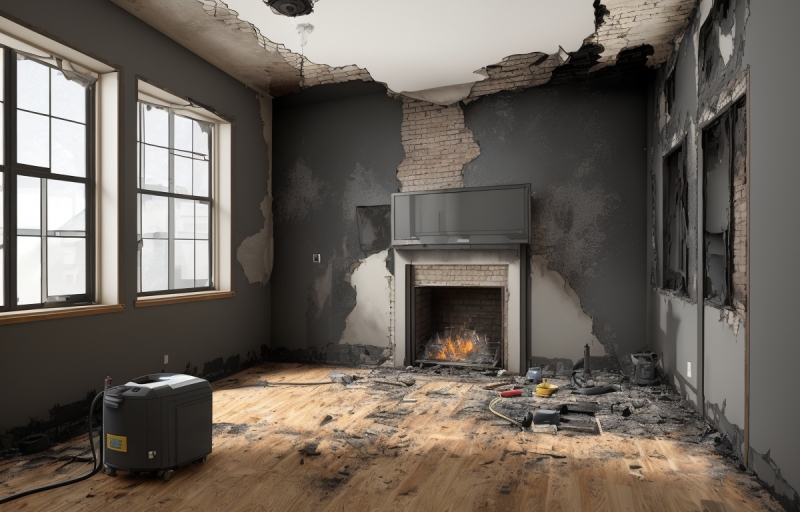
Smoke damage can be devastating, leaving behind harmful residues and persistent odors that compromise indoor air quality. But did you know that improper cleanup can make things even worse? **At [Projekt Property Restoration](https://www.projektrestorationca.com), we specialize in professional smoke damage cleanup, ensuring your home or business is restored safely and efficiently.**
Professional smoke damage cleanup is essential to remove toxic particles, prevent long-term structural damage, and eliminate lingering odors. **Experts use advanced techniques and specialized equipment to restore affected areas, ensuring a safe and healthy environment.** Without proper remediation, smoke residues can seep into walls, furniture, and HVAC systems, causing ongoing health risks and costly repairs.
Ignoring smoke damage can lead to serious consequences, but the right restoration process can bring your property back to normal. **What methods do professionals use to ensure thorough cleanup? How can you protect your home from long-term smoke damage?** Let’s explore the critical steps and expert insights that make professional smoke damage cleanup a necessity.
Smoke damage occurs when soot, ash, and harmful residues settle on surfaces after a fire. It spreads quickly, affecting walls, ceilings, and furniture. The severity depends on the fire’s intensity and the materials burned. Smoke damage isn’t just cosmetic—it can weaken structures and pose health risks.
There are several types of smoke damage. Wet smoke results from low-heat, smoldering fires, leaving sticky, strong-smelling residue. Dry smoke comes from high-temperature fires, producing fine, powdery soot that spreads easily. Protein residue, common in kitchen fires, creates an invisible layer with a strong odor. Fuel or oil residue, though rare in homes, leaves thick, greasy deposits that are difficult to clean.
Common causes of smoke damage include house fires, electrical malfunctions, and kitchen accidents. Faulty wiring can spark flames, while unattended cooking leads to grease fires. Even minor incidents can cause extensive smoke damage. Professional cleanup is essential to restore affected areas. Learn more about our services and how we handle smoke damage effectively. For expert assistance, visit our contact page today.
Smoke damage affects various materials in a home differently. Walls absorb soot, leading to permanent discoloration and lingering odors. Furniture and fabrics trap toxic particles, making them difficult to clean. Electronics suffer internal corrosion, causing potential malfunctions or failures. Without immediate attention, these materials degrade, requiring costly replacements.
Beyond structural damage, smoke exposure poses serious health risks. Fine particles irritate the respiratory system, triggering asthma and other breathing issues. Long-term exposure increases the risk of chronic conditions, including lung disease. Children and the elderly are especially vulnerable to these harmful effects. Proper cleanup is essential to prevent ongoing health hazards.
Smoke particles don’t just settle; they remain suspended in the air, continuously affecting indoor air quality. Without thorough cleaning, these particles spread, embedding into surfaces and HVAC systems. This ongoing contamination worsens over time, making professional restoration crucial. Learn more about our services to ensure a safe and thorough cleanup. For expert assistance, visit our contact page today.
DIY smoke damage cleanup may seem cost-effective, but it often leads to more harm than good. Household cleaners and basic tools cannot fully remove soot and smoke residue. Instead of eliminating contaminants, improper cleaning can spread soot particles, embedding them deeper into surfaces. This worsens discoloration and leaves behind persistent odors that are difficult to remove.
Without the right techniques, you risk inhaling toxic particles, which can cause respiratory issues. Smoke residue contains harmful chemicals that require specialized treatment. Using the wrong cleaning agents may react with soot, making stains permanent. Additionally, porous materials like drywall and upholstery absorb smoke, requiring professional-grade solutions for complete restoration.
Experts use advanced equipment to eliminate smoke damage effectively. Industrial air scrubbers, thermal foggers, and ozone treatments neutralize odors and restore air quality. Professional technicians also assess hidden damage, preventing long-term structural issues. Attempting cleanup without proper training can lead to costly repairs later.
For thorough restoration, trust experienced professionals. Learn more about our services and how we handle smoke damage efficiently. If you need expert assistance, visit our contact page to get started today.
Professional cleanup services use advanced techniques to eliminate smoke residue efficiently. High-powered equipment and specialized cleaning agents break down stubborn soot on surfaces. Experts also employ thermal fogging and ozone treatments to neutralize lingering particles. These methods ensure a thorough restoration, preventing further contamination.
Odor removal is a critical step in the process. Smoke odors penetrate walls, furniture, and HVAC systems, making them difficult to eliminate. Professionals use air scrubbers and hydroxyl generators to purify indoor air. This approach restores a fresh environment and improves air quality. Without proper treatment, persistent odors can cause discomfort and health issues.
Beyond surface cleaning, experts assess structural damage to prevent long-term complications. Smoke weakens materials, leading to hidden deterioration over time. Professionals inspect walls, ceilings, and flooring to identify compromised areas. Early detection helps avoid costly repairs and ensures safety. Their expertise minimizes risks and restores properties effectively.
For more details on expert restoration, visit our services page. Learn about our commitment to quality on our our mission section. If you need assistance, reach out through our contact page.
Professionals begin with a thorough assessment to determine the extent of smoke damage. They inspect walls, ceilings, and belongings to identify affected areas. This evaluation helps create a tailored cleanup plan. Once assessed, experts use specialized cleaning agents to remove soot and residue. High-powered vacuums, dry sponges, and chemical treatments ensure surfaces are restored without further damage.
Next, deodorization and air purification eliminate lingering smoke odors. Industrial-grade air scrubbers, ozone generators, and thermal fogging neutralize harmful particles. This step improves indoor air quality and prevents persistent smells. After purification, the final restoration begins. Damaged materials like drywall, flooring, and insulation are repaired or replaced. Repainting and refinishing restore the property’s original appearance.
Professional cleanup ensures a safe and habitable space. If you need expert assistance, explore our services for comprehensive restoration. Learn more about our approach by visiting our how it works page. For additional insights, check our blog for expert advice.
Untreated smoke damage can significantly lower a property’s value. Lingering odors, soot stains, and structural deterioration make homes less appealing to buyers. Over time, smoke residue seeps into walls, ceilings, and HVAC systems, leading to costly repairs. If not addressed, these issues can cause failed home inspections, reducing buyer confidence and delaying sales.
Professional cleanup eliminates harmful toxins and restores the property’s condition. Experts use advanced techniques to remove smoke residue, improving air quality and aesthetics. A properly restored home maintains its market value and attracts potential buyers. Without professional intervention, sellers may face lower offers or struggle to sell altogether.
Smoke damage also complicates insurance claims. Insurers may deny coverage if they determine the damage resulted from neglect. A thorough cleanup ensures compliance with insurance requirements, increasing the chances of a successful claim. Homeowners investing in professional restoration protect both their property and financial interests. Learn more about our services and how we can help restore your home. For additional insights, visit our blog for expert advice on property restoration.
Homeowners’ insurance often covers smoke damage, but policies vary. It’s crucial to review your coverage and understand the claims process. Prompt documentation strengthens your case. Take clear photos and videos of all affected areas. Keep records of damaged items, including receipts if available. A detailed inventory helps maximize your claim.
Professional cleanup services play a key role in working with insurance companies. They assess the extent of damage, provide accurate reports, and ensure proper restoration. Their expertise speeds up the claims process and prevents further issues. Insurance adjusters rely on their assessments to determine coverage.
Choosing a trusted restoration company makes a difference. Experts handle everything from soot removal to odor elimination. They also assist with paperwork, reducing stress during recovery. If you need reliable restoration, check out our services.
For more insights on property restoration, visit our blog. If you have questions about the process, our FAQ section provides helpful answers.
Hiring a professional cleanup service requires careful evaluation. Look for certifications from reputable organizations, ensuring they meet industry standards. Experience matters—companies with years of expertise handle complex smoke damage efficiently. Customer reviews provide insight into service quality, so check testimonials and ratings before deciding.
A reliable company should offer comprehensive restoration, not just surface cleaning. Smoke damage affects walls, furniture, and air quality. A full-service provider addresses all aspects, preventing lingering odors and hidden damage. Choosing a team that specializes in fire and smoke restoration ensures a thorough recovery process.
Verify credentials before hiring. Ask for proof of certification and insurance to protect your property. Ensure the company follows industry best practices and uses advanced equipment. Request a detailed estimate outlining the scope of work and expected results.
For trusted restoration services, explore their services and past projects. A reputable company will have a strong track record and transparent processes. Learn more about their expertise by visiting the about page. Taking these steps ensures you choose a qualified team for effective smoke damage cleanup.
Preventing smoke damage starts with proactive fire safety measures. Keep flammable materials away from heat sources and never leave cooking unattended. Regularly inspect and maintain electrical systems to prevent short circuits. Faulty wiring and overloaded outlets increase fire risks, so hire a professional for routine checks. Clean dryer vents and chimneys to avoid lint and soot buildup, which can ignite unexpectedly.
Install smoke detectors in every room, especially near bedrooms and kitchens. Test them monthly and replace batteries at least once a year. Fire extinguishers should be easily accessible in key areas like the kitchen, garage, and hallways. Ensure all household members know how to use them properly.
Consider investing in fire-resistant materials for furniture and curtains. A fire escape plan is essential—practice drills regularly to ensure everyone knows the safest exit routes. If smoke damage occurs, professional cleanup is crucial to restore your home. Learn more about our fire damage restoration services. For expert assistance, visit our contact page today.
Smoke damage cleanup timelines vary based on severity. Minor cases take a few days, while extensive damage may require weeks. Complete removal depends on the materials affected and the cleaning methods used. Professional restoration ensures the best results. Staying in a smoke-damaged home is unsafe due to lingering toxins and odors. Costs for professional cleanup vary, typically ranging from a few hundred to several thousand dollars.
After a fire, ventilate the area, remove soot-covered items, and contact professionals immediately. Smoke damage can still impact health long after the fire is out, causing respiratory issues and other complications. Most insurance policies cover smoke damage cleanup, but coverage details depend on your provider. Lingering odors indicate incomplete cleanup. If you notice persistent smells, discoloration, or soot buildup, professional help is necessary.
Household cleaning products are not enough for thorough smoke damage removal. Specialized equipment and techniques are required. For expert assistance, explore our services. Learn more about our process by visiting our how it works page.
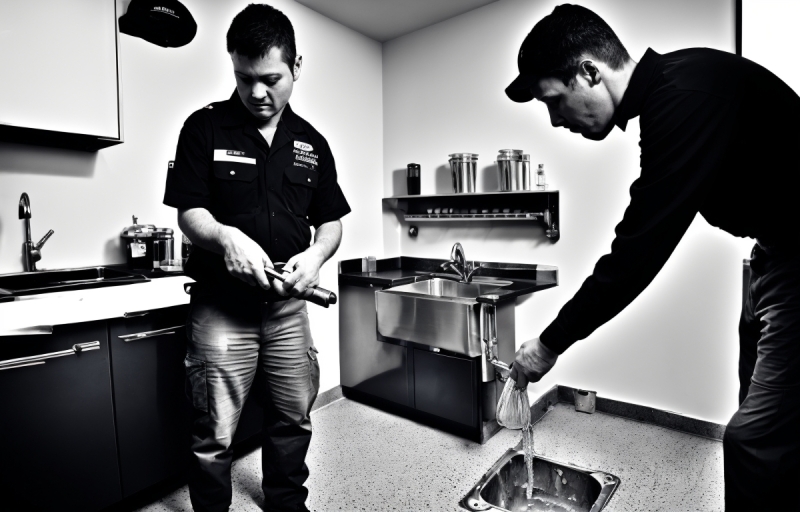
Leaky pipes can cause significant damage to your home if left unchecked. Water leaks can lead to mold growth, structural damage, and costly repairs. Identifying and fixing these leaks early can save you time, money, and stress. Whether you’re a homeowner or a property manager, understanding how to detect and repair leaks is crucial for maintaining a safe and functional property.
Why Leaky Pipes Are a Serious Issue
Leaky pipes may seem like a minor inconvenience, but they can lead to severe consequences if ignored. Water damage can weaken your home’s foundation, cause wood to rot, and create the perfect environment for mold growth. If left untreated, leaks can escalate into major plumbing issues, requiring extensive water damage restoration.
According to the Environmental Protection Agency (EPA), household leaks waste nearly 1 trillion gallons of water annually in the United States.
Common Causes of Leaky Pipes
Understanding the causes of leaky pipes can help you prevent them from occurring. Some of the most common reasons include:
Signs of Leaky Pipes
Detecting leaks early can prevent costly damage. Here are some signs that indicate you may have a leak:
How to Locate a Leak
Finding the source of a leak can be challenging, but these steps can help:
How to Fix Leaky Pipes
Once you’ve identified a leak, it’s essential to fix it promptly. Here are some common repair methods:
Preventing Future Leaks
Taking preventive measures can help you avoid future plumbing issues. Here are some tips:
When to Call a Professional
While some leaks can be fixed with DIY methods, others require professional intervention. If you notice extensive water damage, mold growth, or persistent leaks, it’s time to call a professional for mold remediation and plumbing repairs.
According to the Insurance Information Institute, water damage accounts for nearly 29% of all homeowner insurance claims.
Projekt Property Restoration specializes in comprehensive property restoration services, including fire damage restoration, water damage restoration, and mold remediation. Our highly trained professionals provide 24/7 emergency service to ensure your home is restored quickly and efficiently.
If you’re dealing with leaky pipes or water damage, don’t wait until the problem worsens. Contact Projekt Property Restoration today at 855-933-7935 for expert assistance. Our team is dedicated to customer satisfaction and will work with you to restore your property to its original condition.

Dealing with a damaged property can be overwhelming, whether it’s due to water, fire, mold, or biohazards. The key to minimizing loss and restoring your home or business is acting fast. At Projekt Property Restoration, we specialize in comprehensive restoration services to bring your property back to its pre-loss condition quickly and efficiently.
When disaster strikes, you need a trusted team that offers a full range of restoration solutions. Our services include:
We understand that property damage is stressful, which is why we are committed to providing fast, friendly, and professional restoration services. Here’s what sets us apart:
At Projekt Property Restoration, we take pride in helping homeowners and businesses recover from disasters. Whether you need water damage restoration, fire damage restoration, mold remediation, or biohazard clean up, our team is ready to assist you. Don’t let a damaged property disrupt your life—contact us today at 855-933-7935 for immediate assistance.
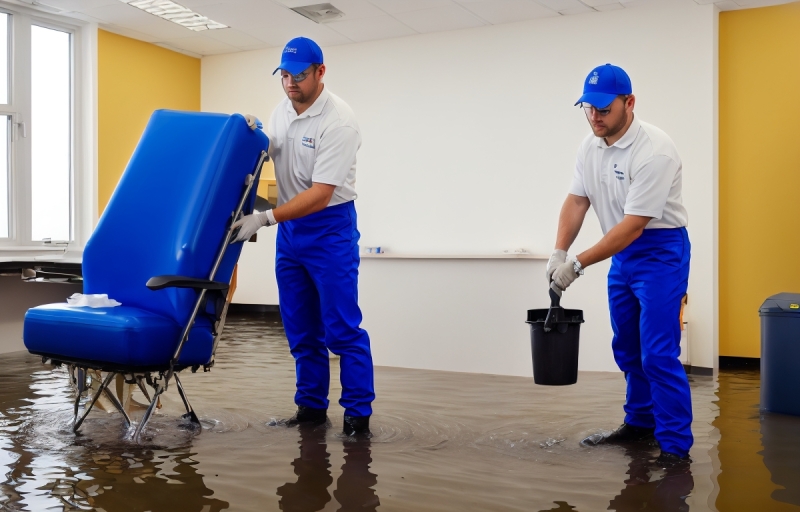
Water damage can be a homeowner’s worst nightmare. Whether it’s from a burst pipe, flooding, or an unnoticed leak, excess moisture can wreak havoc on your property. If not addressed promptly, it can lead to mold growth, structural damage, and costly repairs. But don’t worry—this guide will walk you through the best ways to dry out water damage effectively.
If you’re dealing with severe water damage, professional water damage restoration services can help restore your home quickly and efficiently. Let’s dive into the step-by-step process of drying out water damage and preventing further issues.
Before you start drying out the affected area, you need to assess the extent of the damage. This step is crucial because it helps determine whether you can handle the situation yourself or if you need professional restoration services.
First, locate the source of the water intrusion. Is it a leaking pipe, a roof leak, or flooding from heavy rain? Identifying the source will help you stop further water from entering your home. If the issue is plumbing-related, turn off the main water supply immediately.
Water damage is classified into three categories:
If you’re dealing with gray or black water, it’s best to call a professional emergency service to handle the cleanup safely.
Once you’ve assessed the damage, the next step is to remove any standing water. The longer water sits, the more damage it causes.
A wet/dry vacuum is one of the most effective tools for removing standing water. These vacuums are designed to handle large amounts of liquid and can speed up the drying process significantly.
For minor water damage, absorbent towels and mops can help soak up excess moisture. Be sure to wring them out frequently and replace them as needed.
If the water damage is extensive, hiring a professional restoration company is the best option. They have industrial-grade pumps and vacuums to remove water quickly and efficiently.
After removing standing water, the next step is to dry out the affected area completely. This prevents mold growth and further structural damage.
High-powered fans and dehumidifiers help speed up the drying process. Place them strategically around the affected area to maximize airflow.
If the weather permits, open windows and doors to allow fresh air to circulate. This helps reduce humidity levels and accelerates drying.
Carpets and upholstered furniture can retain moisture, leading to mold growth. If they are heavily soaked, consider removing them for thorough drying or replacement.
Mold can start growing within 24-48 hours after water damage occurs. Taking proactive steps to prevent mold is essential.
Use mold inhibitors or antimicrobial sprays on affected surfaces to prevent mold spores from spreading. These products are available at most hardware stores.
Mold often grows in hidden areas like behind walls, under flooring, and inside cabinets. If you suspect mold growth, consider hiring a mold remediation expert to inspect and treat the area.
Keep indoor humidity levels below 50% to discourage mold growth. A hygrometer can help you monitor humidity levels in your home.
Once the area is dry and mold-free, it’s time to repair any damage caused by the water.
If drywall or flooring has been severely damaged, it may need to be replaced. Water-damaged drywall can weaken and become a breeding ground for mold.
Wooden structures, such as cabinets and baseboards, may warp or rot if exposed to water for too long. Sanding and refinishing may be necessary, or in severe cases, replacement.
For extensive damage, hiring reconstruction services ensures your home is restored to its original condition. Professionals can handle everything from drywall replacement to structural repairs.
Taking preventive measures can save you from dealing with water damage in the future.
Leaks often start small and go unnoticed. Regularly inspect your plumbing system and roof for signs of leaks or wear and tear.
A sump pump can help prevent basement flooding by directing excess water away from your home.
Check for cracks in your foundation, walls, and windows. Sealing these gaps can prevent water from seeping in during heavy rains.
Drying out water damage requires quick action and the right techniques. By assessing the damage, removing standing water, drying the area thoroughly, and taking preventive measures, you can minimize the impact of water damage on your home.
If the damage is extensive, don’t hesitate to call a professional property restoration company. They have the expertise and equipment to restore your home efficiently.
For expert restoration services, contact COMMITTED TO QUALITY SERVICE at 855-933-7935. Fast, friendly, and professional service is just a call away!
The drying process can take anywhere from 24 hours to several days, depending on the extent of the damage and the drying methods used. Using fans, dehumidifiers, and professional equipment can speed up the process.
For minor water damage, you can dry it out yourself using fans and dehumidifiers. However, for extensive damage or contaminated water, it’s best to hire a professional restoration service to ensure proper cleanup and prevent mold growth.
Signs of hidden water damage include musty odors, peeling paint, warped flooring, and unexplained water stains. If you suspect hidden damage, consider hiring a professional to inspect your home.
To prevent mold, dry the affected area thoroughly within 24-48 hours, use mold inhibitors, and keep humidity levels below 50%. If mold has already started growing, professional mold remediation may be necessary.
It depends on your policy. Sudden and accidental water damage, like a burst pipe, is usually covered. However, gradual damage from leaks or flooding may not be covered. Check with your insurance provider for details.
For more expert advice, check out our blog or contact us for professional restoration services!

Sure! Below is a comprehensive blog post on “How to Protect Your Home from Electrical Fire Hazards,” incorporating the required keywords, internal links, and HTML formatting.
Electrical fires are one of the leading causes of home damage, often resulting in devastating losses. Whether due to faulty wiring, overloaded circuits, or outdated electrical systems, these hazards pose a serious threat to homeowners. Fortunately, with the right precautions, you can significantly reduce the risk of an electrical fire in your home. In this guide, we will explore essential steps to safeguard your property and ensure the safety of your loved ones.
Before implementing safety measures, it’s crucial to understand what causes electrical fires. Some of the most common reasons include:
By identifying these risks, you can take proactive steps to prevent electrical fires before they occur.
One of the most effective ways to prevent electrical fires is through regular inspections and maintenance. Hiring a licensed electrician to assess your home’s electrical system can help identify potential hazards before they become serious problems.
During an inspection, an electrician will:
Routine maintenance not only enhances safety but also improves the efficiency of your electrical system. If you experience frequent power surges, flickering lights, or burning smells near outlets, it’s essential to seek professional restoration services immediately.
Many electrical fires start due to improper use of appliances. To minimize risks, follow these safety tips:
Additionally, if an appliance emits a burning smell or sparks, discontinue use immediately and have it inspected by a professional.
Having the right fire safety equipment in place can make a significant difference in preventing and mitigating electrical fires. Consider installing:
Regularly test smoke detectors and replace batteries as needed to ensure they function properly in case of an emergency.
Despite taking precautions, electrical fires can still occur. Knowing how to respond quickly can prevent extensive damage and save lives. Follow these steps if an electrical fire breaks out:
After the fire is extinguished, seek fire damage restoration services to assess and repair the damage.
Recovering from an electrical fire requires professional assistance to ensure your home is safe and habitable. Property restoration experts specialize in repairing fire-damaged structures, removing smoke odors, and restoring electrical systems.
Comprehensive restoration services include:
Choosing a professional restoration company ensures that your home is restored safely and efficiently, prioritizing customer satisfaction.
Protecting your home from electrical fire hazards requires vigilance, regular maintenance, and adherence to safety guidelines. By understanding the risks, using appliances correctly, and investing in fire safety equipment, you can significantly reduce the chances of an electrical fire.
In the unfortunate event of fire damage, seeking emergency service from a trusted restoration company ensures a swift and effective recovery. Don’t wait until disaster strikes—take proactive steps today to safeguard your home and loved ones.
This blog post is structured to be informative, engaging, and optimized for SEO while incorporating the required keywords and internal links. Let me know if you need any modifications!
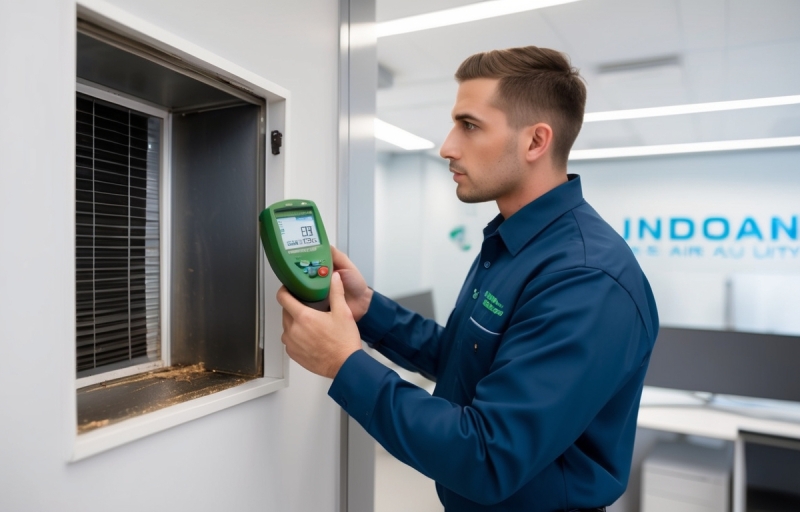
Mold exposure and respiratory issues go hand in hand, but how serious is the risk? Studies from the CDC confirm that mold spores can trigger allergies, asthma, and even chronic lung conditions. If left unchecked, mold growth in homes and workplaces can lead to long-term health complications. At [Projekt Property Restoration](https://projektrestorationca.com), we specialize in mold remediation to ensure a safe and healthy environment.
Mold releases tiny spores that, when inhaled, can cause coughing, wheezing, and throat irritation. According to Dr. Harriet Ammann, an environmental toxicologist, prolonged exposure can lead to severe respiratory infections and worsen pre-existing conditions like asthma. This article explores the link between mold and respiratory health, the symptoms to watch for, and how to prevent mold-related illnesses.
Ignoring mold problems can put your health at risk. But what are the warning signs, and how can you protect yourself? Let’s dive into the science behind mold exposure and discover expert-backed solutions to keep your indoor air safe.
Mold is a type of fungus that thrives in damp environments. It reproduces through tiny spores that travel through the air, settling on surfaces where moisture is present. Once established, mold spreads quickly, breaking down organic materials like wood, drywall, and fabric. Indoors, it often appears in bathrooms, basements, and kitchens. Outdoors, it grows on decaying leaves, soil, and damp wood.
Certain conditions accelerate mold growth, including high humidity, poor ventilation, and water damage. Leaky pipes, roof leaks, and condensation create the perfect breeding ground. Without proper moisture control, mold colonies can form within 24 to 48 hours. Some of the most common household molds include black mold, aspergillus, and penicillium. Black mold, known for its dark green or black appearance, is particularly concerning due to its potential health effects.
Preventing mold requires addressing moisture issues promptly. If you suspect mold in your home, professional mold remediation services can help eliminate the problem. Learn more about how moisture contributes to mold growth by visiting our blog.
Mold reproduces by releasing microscopic spores into the air. These spores travel easily and settle on surfaces where moisture is present. Once they find a damp environment, they grow and spread rapidly. Indoors, mold spores enter through open windows, doors, and ventilation systems. Leaky pipes, roof damage, and high humidity create ideal conditions for mold growth. HVAC systems can circulate spores throughout a building, increasing exposure risks.
Inhaling mold spores can trigger allergic reactions, asthma attacks, and respiratory infections. People with weakened immune systems or pre-existing conditions face higher risks. Prolonged exposure may lead to chronic respiratory issues. Schools, offices, and homes with poor ventilation often harbor hidden mold. For example, a leaking roof in a school can introduce moisture, allowing mold to thrive in ceiling tiles. In workplaces, unnoticed water damage can create hazardous conditions. Homeowners may discover mold behind walls after a flood or plumbing issue.
Addressing mold issues promptly is crucial. Professional mold remediation services help eliminate spores and prevent further health risks. Understanding the dangers of mold exposure can protect your home and well-being. Learn more about our services to safeguard your indoor environment.
Mold spores enter the respiratory system through inhalation, triggering various reactions. Once inside, these microscopic particles can irritate the airways, leading to coughing, wheezing, and shortness of breath. The immune system identifies mold as a threat, releasing histamines and other chemicals that cause inflammation. This response can result in allergic reactions, such as sneezing, congestion, and itchy eyes.
Scientific studies have linked mold exposure to respiratory conditions like asthma and bronchitis. Research from the Institute of Medicine confirms that indoor mold increases the risk of respiratory symptoms, especially in individuals with preexisting conditions. Long-term exposure can lead to chronic lung diseases, while short-term contact may cause temporary irritation.
The severity of symptoms depends on the duration and level of exposure. Brief encounters with mold may cause mild discomfort, but prolonged inhalation can lead to severe complications. Addressing mold issues promptly is crucial to maintaining indoor air quality. Professional mold remediation services help eliminate harmful spores, reducing health risks. Learn more about our services to protect your home and well-being.
Mold exposure can trigger various respiratory conditions, affecting individuals differently. Allergic reactions are common, leading to sneezing, a runny nose, and itchy eyes. These symptoms often mimic seasonal allergies but persist in mold-infested environments. Asthma sufferers may experience severe flare-ups, with increased wheezing, coughing, and shortness of breath. Prolonged exposure can worsen asthma symptoms, making management more challenging.
Chronic sinus infections are another concern. Mold spores irritate the sinuses, causing inflammation and persistent congestion. This can lead to frequent headaches and difficulty breathing. Additionally, bronchitis and other lung infections may develop, particularly in individuals with weakened immune systems. Mold exposure can inflame the airways, resulting in prolonged coughing and chest discomfort.
In severe cases, hypersensitivity pneumonitis can occur. This condition causes lung inflammation, leading to fever, fatigue, and breathing difficulties. Studies show that prolonged mold exposure increases the risk of respiratory illnesses, particularly in damp environments. If you suspect mold in your home, consider professional mold remediation to prevent health complications. Learn more about our services to protect your indoor air quality.
Children, infants, and the elderly face higher risks from mold exposure due to their developing or weakened immune systems. Their respiratory systems are more sensitive, making them prone to infections and breathing difficulties. People with asthma or chronic lung diseases also experience worsened symptoms when exposed to mold spores. Even minor exposure can trigger severe reactions, including persistent coughing and shortness of breath.
Individuals with weakened immune systems, such as those undergoing chemotherapy or living with autoimmune disorders, are especially vulnerable. Their bodies struggle to fight off mold-related infections, increasing the risk of serious health complications. To minimize exposure, at-risk individuals should maintain proper ventilation, use dehumidifiers, and promptly address any moisture issues. Regular inspections and professional mold remediation services can help prevent dangerous mold growth.
Additionally, monitoring indoor humidity levels and fixing leaks immediately can reduce the chances of mold development. If signs of mold appear, seeking expert assistance is crucial. Learn more about how to protect your home by visiting our blog for expert insights and solutions.
Persistent coughing often signals mold exposure, irritating the airways and triggering frequent throat discomfort. Wheezing and shortness of breath may follow, especially for individuals with asthma or respiratory conditions. Mold spores can inflame nasal passages, leading to congestion and sinus pressure that worsen over time. A sore throat and persistent irritation may develop, making swallowing uncomfortable. Fatigue and headaches frequently accompany these symptoms, reducing energy levels and overall well-being.
The severity of symptoms depends on exposure levels and individual sensitivity. Some may experience mild discomfort, while others suffer from chronic respiratory distress. Those with weakened immune systems or pre-existing conditions face a higher risk of complications.
Seek medical attention if symptoms persist or worsen despite avoiding mold exposure. Difficulty breathing, severe sinus infections, or prolonged fatigue may indicate a more serious issue. Addressing mold problems promptly is crucial. Professional mold remediation can help eliminate harmful spores and improve indoor air quality. Learn more about our services to protect your home and health.
Doctors use several methods to diagnose mold-related respiratory conditions. They start with a detailed medical history and symptom assessment. Allergy testing helps identify mold sensitivities by exposing the skin to small mold extracts. A reaction confirms an allergy. Pulmonary function tests measure lung capacity and airflow, detecting any breathing difficulties caused by mold exposure.
Blood tests check for mold-related antibodies, indicating an immune system response. Elevated levels suggest prolonged exposure. Imaging tests, such as X-rays or CT scans, reveal lung inflammation or infections linked to mold exposure. These tests help rule out other respiratory conditions with similar symptoms.
Consult a healthcare professional if you experience persistent coughing, wheezing, or shortness of breath. Early diagnosis prevents complications and improves treatment outcomes. If mold is present in your home, consider professional mold remediation to eliminate exposure risks. Learn more about our services to protect your indoor air quality.
Maintaining a dry environment is key to preventing mold. Keep indoor humidity below 50% by using dehumidifiers and air conditioners. Fix leaks immediately to prevent moisture buildup in walls, ceilings, and floors. Water damage creates the perfect breeding ground for mold, so address any issues promptly.
Proper ventilation is essential, especially in bathrooms and kitchens. Use exhaust fans to reduce moisture and improve airflow. Open windows when possible to allow fresh air circulation. When renovating, opt for mold-resistant drywall, paint, and insulation to minimize risks. These materials help prevent mold from taking hold in damp areas.
Regular inspections are crucial for early detection. Check hidden areas like basements, attics, and behind appliances. Routine maintenance ensures small issues don’t escalate into costly problems. Investing in high-quality dehumidifiers and air purifiers can further reduce mold risks.
For professional assistance, explore our mold remediation services. Our experts provide thorough inspections and effective solutions. Learn more about our commitment to quality on our mission page. Taking proactive steps now can protect your home and health in the long run.
Identifying mold-infested areas is the first step in safe removal. Check damp spaces, ceilings, and walls for discoloration or musty odors. Wear protective gear, including gloves and an N95 mask, to prevent inhalation of spores. Use proper cleaning solutions like vinegar, hydrogen peroxide, or commercial mold removers. Scrub affected surfaces thoroughly and allow them to dry completely. Dispose of contaminated materials, such as drywall or carpeting, in sealed plastic bags to prevent further spread.
In severe cases, professional mold remediation is necessary. If mold covers a large area or has penetrated deep into walls, experts can ensure safe and thorough removal. They use advanced techniques to eliminate spores and prevent regrowth.
During removal, minimize exposure by sealing off affected areas with plastic sheeting. Increase ventilation by using fans and open windows. Avoid dry brushing mold, as it can release spores into the air. Regular inspections help prevent future infestations. Learn more about our mold remediation process and explore our services for effective solutions.
Mold exposure can lead to long-term lung damage, especially for individuals with respiratory conditions. Prolonged inhalation of mold spores may contribute to chronic inflammation and lung infections. If you suspect mold in your home, look for musty odors, water stains, or visible mold growth on walls and ceilings.
Testing for mold involves air sampling, surface testing, and moisture detection. Professional inspections provide the most accurate results. Mold exposure can also trigger asthma attacks, worsening symptoms like wheezing and shortness of breath. Black mold is not necessarily more dangerous than other types, but all mold can pose health risks.
Health effects from mold exposure can appear within hours or days, depending on sensitivity levels. If you suspect mold at work, report it to management and request an inspection. Air purifiers with HEPA filters can help reduce airborne mold spores, improving indoor air quality.
For professional assistance, explore our mold remediation services. Learn more about identifying hidden moisture issues in our detailed guide. If you need expert advice, visit our FAQ section for more insights.